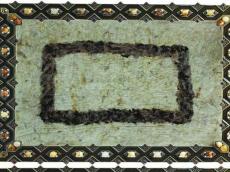|
|
TODAY.AZ / Arts & Entertainment
Felting, ancient Azerbaijani culture of handcraft
15 December 2015 [13:24] - TODAY.AZ

By Laman Sadigova
The Azerbaijani people are proud of their historical monuments as well as their rich literature, art, and music.
Surrounded the beautiful nature, favorable climate, and natural wealth of the region has had a significant impact on the artistic thinking and creativity of the Azerbaijani people. Each type of art had a long and difficult path to development in Azerbaijan due to its long and tumultuous history.
The Ancient Azerbaijani folk arts of pottery, carpet and silk weaving, metallurgy, blacksmithing and craft areas, such as felting are widespread in the ancient city of Nakhchivan.
Felting, in particular, has a special place in ancient culture and history.
Felting has traditionally been a developed art in the villages of Shahbuz and Sherur. The felt, which has the ability to keep cool in the summers and protect from the cold in winter, has been widely used for covering roofs, the sides of huts and shacks, floors, decorating houses, making cloaks (yapinji), hats, boots, socks, cassocks (eba), , horse covers (chul) and others..
A senior fellow at the Archaeology and Ethnography Institute of Nakchivan, Asaf Orujov, said that it is important to note the role of livestock in the formation of the art of felting. Studies have shown that people in ancient times warmed themselves in cold weather with wool and leather. After a while, the wool would stick to each other, prompting people learn to make “keche,”a small national carpet.
Orujov also added that the people of Media (ancient country) wore the hats called the "tiara" made from “kecha.” It is most likely that other clothing elements were made from this material at that time.
Felting has become an area of significant artisanal craftsmanship and is more developed in the mountain and foothill areas. The material was also used to cover ancient huts in a certain historical period.
URL: http://www.today.az/news/entertainment/146001.html
 Print version
Print version
Connect with us. Get latest news and updates.
See Also
- 24 April 2025 [13:14]
Lecture on Mirza Kadim Irevani's legacy delivered in Kyrgyzstan - 24 April 2025 [12:19]
Book by national writer presented in Kyrgyzstan - 23 April 2025 [14:51]
Gala State Reserve marks its 37th anniversary with tree planting campaign - 23 April 2025 [11:43]
State Philharmonic Hall pays tribute to eminent composer - 22 April 2025 [14:15]
Int'l Jazz Day in Baku to celebrate freedom and inspiration - 22 April 2025 [13:11]
Baku, Tashkent to hold joint art projects - 22 April 2025 [11:05]
Leyla Aliyeva meets with spouse of Secretary General of Central Committee of Vietnam's Communist Party - 22 April 2025 [10:41]
Culture Minister meets with Kyrgyz counterpart in Bishkek - 21 April 2025 [15:38]
Festival in Masalli embraces arts and fosters creative expression - 21 April 2025 [14:33]
Film about Garabagh War premiered in Nizami Cinema Center
Most Popular
 Culture Minister meets with Kyrgyz counterpart in Bishkek
Culture Minister meets with Kyrgyz counterpart in Bishkek
 Trump sees hope for Ukraine-Russia deal, analysts remain skeptical
Trump sees hope for Ukraine-Russia deal, analysts remain skeptical
 Azerbaijan's Chamber of Accounts urges strengthening audits on renewables & green budgeting
Azerbaijan's Chamber of Accounts urges strengthening audits on renewables & green budgeting
 Azerbaijan and China sign mutual visa exemption agreement for ordinary passport holders
Azerbaijan and China sign mutual visa exemption agreement for ordinary passport holders
 Oil exports from Azerbaijan to Tabriz may be on agenda during Pezeshkian's visit to Baku
Oil exports from Azerbaijan to Tabriz may be on agenda during Pezeshkian's visit to Baku
 South Korea launch fourth reconnaissance satellite into orbit
South Korea launch fourth reconnaissance satellite into orbit
 Leyla Aliyeva meets with Vice-President of Vietnam to expand humanitarian and cultural ties
Leyla Aliyeva meets with Vice-President of Vietnam to expand humanitarian and cultural ties
